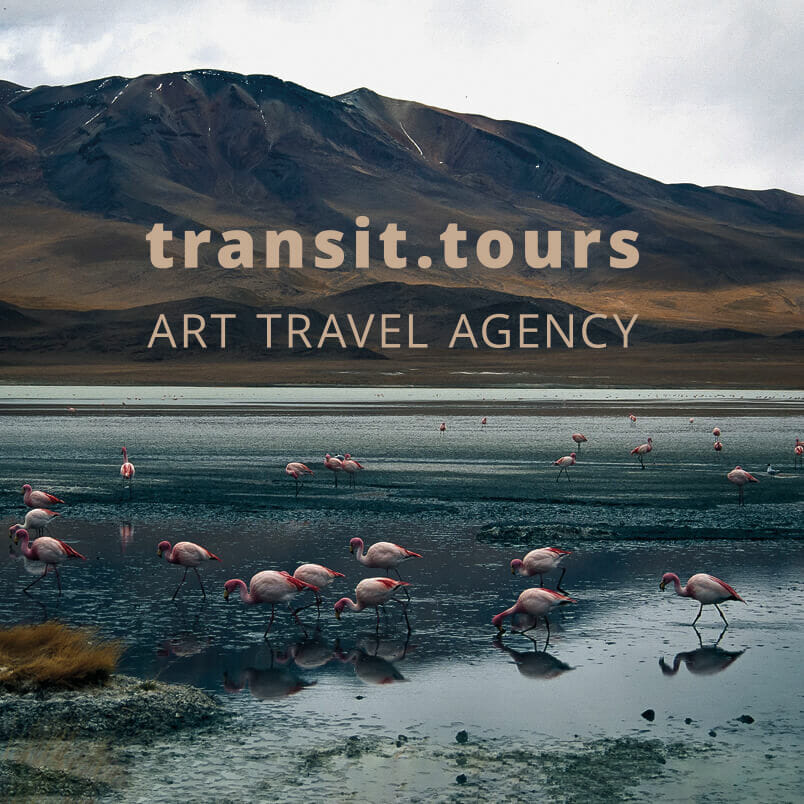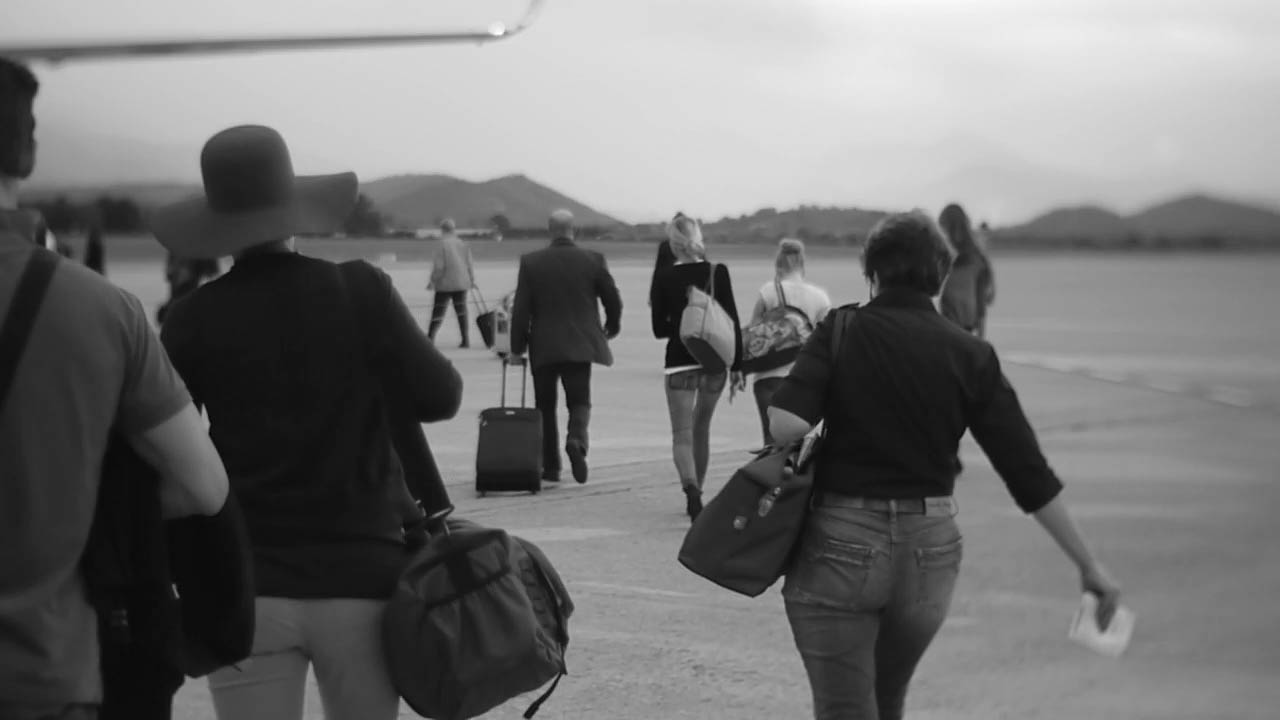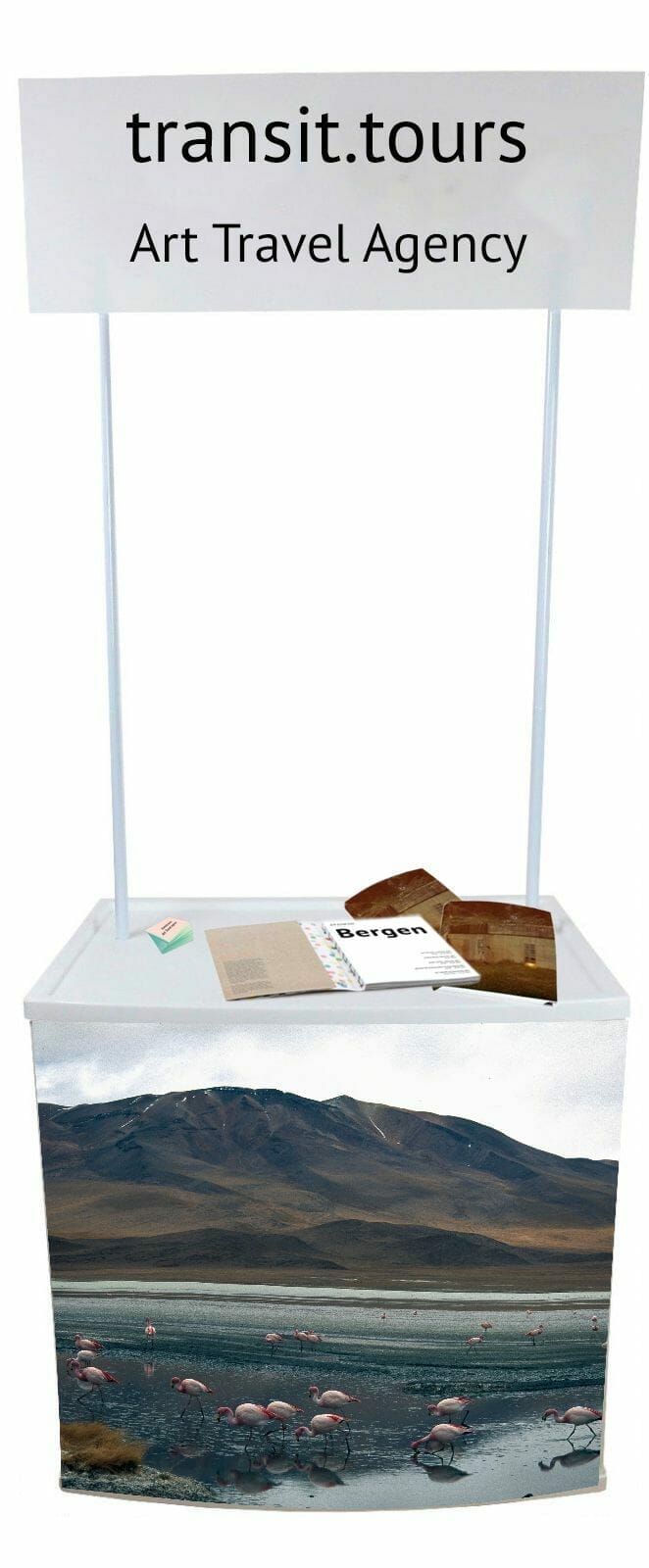Text by Jürgen May, on the occasion of the exhibition 30 Under 30 – Young Entrepreneurs, 2019:
In Germany, employees are entitled to an average of 28.9 vacation days per calendar year, plus public holidays this can add up to a maximum of 41.8 days depending on the federal state¹. This legally regulated leisure time clock corresponds to those days of the year that the day laborer can organize individually without having to think about the daily breadwinner. To gain the greatest possible distance from the everyday world, traveling is the ultimate way to plan your free time. In 2018, over 70 million Germans traveled abroad.²
But no one escapes the gaze of society, because even when traveling, success-oriented people can make a profit. In this way, the career can also be given a minimum of attention abroad by suggesting his interest in the unknown through an exquisite choice. Successes on trips tend to be on a symbolic level; financial compensation is not sought as an exception. All the more reason to collect anecdotes and experiences in order to be able to rave about the faraway place when you return home and thus enhance your own personality with a pinch of the exotic.
A trip goes without saying at first. The body is removed from its familiar cultural context for a certain period of time and – thanks to travel agencies and progressive tourism associations – relocated to a foreign but largely safe place. With your own culture behind you, you can then look at the foreign world. The main focus is not on the problems of cultural differences between the foreign and the familiar, as certain gaps are left under the aspect of a certain entertainment culture. The immediate experience space must merge seamlessly into a fun experience. It also seems advisable to ignore the diplomatic and political discrepancies in the vacation destination.
The period of time in which the individual is allowed to define themselves as a traveler or a person on leave should, at best, not suggest any connection to everyday life; the aim is to be sprinkled with cultures rather than a reflective examination of them. The appeal lies in a purely superficial view.
This way of looking at things has become unthinkable without photography. On the one hand, the journey is documented, on the other hand, a lens can be placed between the self and the other. As a result of this journey, analog or digital photo albums are created, small private archives that self-certify clever education on the road. This generally socially recognized self-presentation in leisure time is, on the one hand, proof of past undertakings, and on the other hand, it establishes the defining points that can continue to be discussed at home. This is the only way to continue discussing or thematizing this distance from everyday life: on slide evenings in private circles or on the smartphone among colleagues in order to show the success of the trip without contradiction.
The artist Erik Arkadi Seth also goes on journeys, equipped with smartphone, cameras, laptop and other technical tools, but he does not wander along the pilgrimage routes of tourist consumption in order to enjoy the apparent remoteness of hashtag-led travel kitsch. Rather, he uses his artistic eye to trace the production processes of such travel photographs. Landscape photography is therefore a significant part of his oeuvre, but with a different connotation. Looking at Seth’s oeuvre to date, it becomes clear that he is not only driven by the aesthetic aspect, but above all by the production conditions³. At times, he pursues the phenomenon of photography, which, thanks to smartphone cameras at the latest, only takes place unconsciously, even automatically, and is no longer perceived as such, has even been trivialized. The aim is to identify photography in its rudiments or to create it in other ways. The artist traces the structures of the moment before defining them by name.
Erik Arkadi Seth is aware that his image archive is primarily associated with the cliché of tourism on a visual level. That is why he developed the concept of transit.tours art travel agency. Under this title, the artist unites several works as well as ongoing projects that are to grow into a platform in their continuation of digitization. It is therefore primarily an option that allows many different approaches.
Here, the practice of photography and that of traveling go hand in hand, as they fundamentally overlap significantly in terms of experience. Both travel and photography are characterized by a fragmentary momentariness; if the artist wants to attribute aesthetic experienceability to travel culture, he must expose the culture of experience with an open communication structure. In the case of the artwork transit.tours exhibition stand (2018) as a satellite of the transit.tours art travel agency, the pleasure of the experience is redefined through a processual orientation in the social confrontation with the artist. The wanderlust is aesthetically articulated by the potential customers engaging with this experience and unconsciously transforming the realization of the journey into a subjective narrative with the artist. Posing for and triggering the apparatus are explored as indicative experiences of the traveled body in permanent exchange with the “being on site” and the expectation of “being there”.
This means that, on the one hand, the participants remain trapped in the order and remain strangers as tourists, while on the other hand they can re-locate their bodies through the artist’s extended communication with strangers, without being directly caught up in the fragment of the recording. The difference between travel culture and aesthetic production does not disappear in the game. Rather, this separation is sought as an artistic production.
- hrperformance-online.de/news/urlaubstage-2018-so-much-urlaub-haben-beschaeftigte-in-deutschland (07.06.2019)
- en.statista.com/statistics/data/study/151947/survey/number-of-vacation-trips-in-germany-since-2005 (07.06.2019)
- https://erikseth.de





